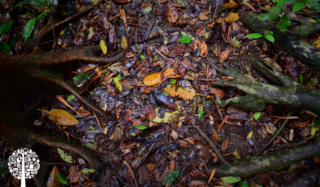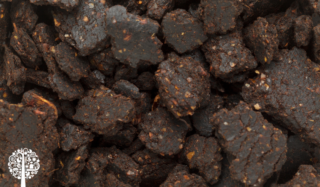Topdressing is an excellent way to feed your soil and, in turn, your plants. So in the words of Motley Crue, “Take Me To The Top!”
An organic gardener’s job is to maintain their plants and the soil. In productive soils, there is a continual breakdown of organic matter occurring at a surface level. For example, in a healthy rainforest, it’s easy to see the active decomposition at work, the trees towering overhead the results of the enormous power underground. People don’t deliberately apply anything to the soil surface in these forests, but fallen leaves, dead vegetation, bugs, and animal manure end up on the forest floor and decompose into the earth below.

Building Soil
This life cycle is old as time and is as ingenious as it is complex. As the decomposition process takes place, the microbiome builds up, resulting in carbon and nutrient-rich soils capable of supporting vast growth.
Healthy, thriving, organic gardens do best when fed ingredients rich in organic matter. Quality organic amendments and compost provide nutrients and food for soil microbes. These ingredients also contain carbon in their makeup, acting as a long-term nutrient battery that stores and releases nutrition for later use. It is all about building soil over time.
Replenishing Carbon Stores
Just like us, our crops are carbon-based life forms. So when we harvest plants, we remove carbon from the ground. If we don’t replenish this carbon store, we have removed a few cells from our battery. Chemically refined nutrients deplete soils over time; you can easily replace the minerals plants use to grow with these refined fertilizers, but they contain zero carbon.
Synthetic fertilizers are not beneficial to microbes. Using these products compromises the soil’s ability to perform various biological tasks. Compounding this issue, we also strip carbon from the soil through continual harvests supported by these mineral-driven products, especially when we don’t replenish the earth in the off-season. Over time, you end up with less biologically active soil that can’t hold onto nutrition. The lovely microbial byproducts that act like glue in our soil dissipate along with the worms and higher forms of life that live on the microbes themselves. The entire structure starts to crumble.
To ensure long-term productivity, we want to replace and maintain as much carbon as possible so the plant and the soil have what they need. NPK is not the whole picture; carbon is essential to productive gardens.
Organic Inputs

We can easily replicate this natural system by feeding the soil with quality organic inputs and applying a mulch layer that actively breaks down over time. Bacteria and fungi immediately begin the decomposition process and, as a result, multiply rapidly. This is the primary driving force for the flow-on effect on other organisms in the microbial hierarchy.
You can plant cover crops to keep the soil active during periods where cropping is not required. Do not harvest and remove them; they are sacrificial and perform the task of keeping all the microflora that live in the roots active and flourishing, ready for your next crop.
Liquid organics offer a quick and attractive hit, but the slow burn of an organic top dressing and the higher amount of carbon results in fewer peaks and valleys throughout the growth cycle and more steady homeostasis.
Productive soils are the bigger picture here. Actively feed the soil with carbon-rich components while your plants grow, allowing them to break down without digging. As a result, gardeners maintain carbon levels instead of losing them to the air. Following this practice throughout the growing season also avoids applying large amounts of fertilizer later. Compare it to continually topping up your battery rather than letting it go flat and recharging.
Feeding Time!

Amendments from plant matter such as alfalfa, barley, kelp, wheat bran, and neem cake are low in NPK but high in carbon. In contrast, ingredients like blood, bone, fish, and feather meal are higher in NPK and have some carbon. In addition, you can choose to add raw carbon in the form of humates and biochar.
A blend of these components makes an excellent meal for your dirt! Depending on the crop you are targeting or your growth phase, you can select inputs that provide tailored nutrition while building the soil long-term.